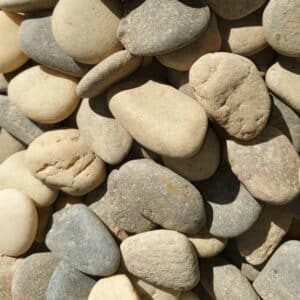10 Basic feeding tips for birds
DIY and how-to

There are many different types of companion birds, and there are specific rules for the nutritional well-being of each species. The following list is a basic guideline. For specific feeding recommendations, please consult your avian veterinarian.
Pellets for the palate – Although seed has been the traditional staple of a bird’s diet, these days most experts recommend a high-quality pellet food that’s formulated for your bird’s species. Seed mixes provide variety, but they do not always provide optimum nutrition. If you want to feed seeds, offer them only in small quantities as treats.
Mix it up – Pellets and seeds should not be the only foods your bird eats. Birds love variety, and enjoy searching to obtain food, just as they would in the wild. Otherwise, they can become bored and develop bad habits, such as overeating, feather picking and tearing up their surroundings. “Fun” foods such as corn on the cob, leafy greens, broccoli, and oranges can provide distraction and entertainment for your bird. Because birds have to “work” to get these foods — i.e. pull kernels off the cob and tear bites off of greens, broccoli and oranges — they stay occupied longer than when feeding on ready-to-eat foods.
For added variety, play with the placement of these treats – hang food from the top or sides of the cage, weave through bars, or stuff pieces of food into toys.
In living colour – Fruits and vegetables should be given twice daily. Appropriate fruits and vegetables for your bird include: corn, carrots, potatoes, squash, dark green leafy vegetables, broccoli, cooked sweet potatoes, melons, apples, oranges, berries, bananas, pears and peaches. Different types of birds require different amounts of food. Your veterinarian will be able to give you specific feeding recommendations based on the type of bird you have and your bird’s individual characteristics.
Their (twice) daily bread – Breads and cereals should be given twice a day. Appropriate breads and cereals include the following: whole grain breads, unsweetened breakfast cereals, unsweetened granola, tortillas and pasta. Ask your vet about specific feeding recommendations based on the type of bird you have and your bird’s individual characteristics.
Sources of protein – Protein should be given twice daily. Appropriate sources of protein include: cooked lean meats, tofu, low-fat cottage cheese, other firm light-coloured cheeses, yoghurt and cooked eggs. Yoghurt may contain friendly bacteria like acidophilus, which can help keep the ratio of good and bad bacteria in check. Be sure to read the label to make sure it contains live cultures and is low in fat.
Special diets – Some birds, such as lories and lorikeets, require specialised diets that are sugary liquids made from fresh fruit or formulated compounds. Soft-billed birds may require mealworms, blossoms and leaves, diced fruit and nectar. Please note that these diets attract insects, and the faeces of these birds are very messy.
Water, water everywhere – Fresh, cold water should be available to your bird at all times. Change it at least once a day, preferably twice, and clean the water bowls at least daily. Vitamin and mineral supplementation is not necessary, unless recommended by your veterinarian.
Freshen up – Food that can spoil, such as fresh fruits and vegetables, should be left in the cage for no longer than 30-45 minutes at a time.
Weighty matters – Pet birds may become overweight. It’s a good idea to monitor your bird’s weight closely. Obesity can lead to health problems, including fatty liver disease and pancreas problems.
In addition to weighing your bird, you can perform the following checks to determine if he or she is overweight :
- Looking at your bird from the front, you should see a bone running down his midline (the keel). There should be a rounded muscle to either side of the bone. If your bird is too fat, bone won’t be the most prominent part of his chest. If your bird is too thin, he or she will feel bony to the side of the keel; alongside the keel will feel concave (curved in).
- You can also check the non-feathered areas alongside the neck and at the base of the jaw. You should be able to see the jugular vein. If you cannot see the vein, it is likely that your bird is overweight.
It’s only natural – In the wild, birds eat about half an hour after sunrise and again at 5pm to 6pm. Sticking close to these feeding times will be most natural for your companion bird. Larger breeds should have vegetables or fruits throughout the day for snacking and entertainment. Smaller breeds can typically have seed/pellets left in the cage throughout the day. They need to eat more frequently due to their higher metabolic rate and energy needs.
You might also like
Shop online
-
SNAILFLO 200ML
- R179.99
- Add to cart Learn More
-
PEBBLES MARINE
- R319.99
- Add to cart Learn More
-
- Sale!
SPINACH 6 PACK
- Original price was: R39.99.R29.99Current price is: R29.99.
- Select options This product has multiple variants. The options may be chosen on the product page Learn More




